THIS WEEK, Popes John XXIII and John Paul II will be canonized—that is, they will enter the sainthood—during a special mass presided over by the new Vicar of Christ, Pope Francis. We are likely to read many, many stories in the media lauding the virtues of all three men. Let’s temper the hagiography with some actual history, lest we be led into the temptation to ignore all the atrocities committed in Jesus’ name.
33 CE
After preaching for years in the Holy Land on the virtues of kindness, toleration, exemplary treatment of women, and forgiveness, Jesus dies on the cross. Neither He nor His apostles write down any of his parables, because they don’t think this is necessary; He genuinely believes that the world is going to end within a generation. It doesn’t. If Jesus is the Son of God, He’s not particularly well informed.
35
On the road to Damascus, Saul of Tarsus, a Jewish citizen of the Roman Empire and zealous persecutor of Christians, has a vision of Jesus Christ, stops his mission, and instead begins preaching that Christ is the Messiah. He adopts his Roman name, Paul. The newest convert puts his own stamp on the inchoate religion, establishing the fledgling church as an anti-feminist, anti-gay operation.
312
The night before the Battle of Milvian Bridge, the Roman emperor Constantine has a vision. Jesus Christ appears to him and promises an upset victory over his rival, Maxentius. Constantine defeats Maxentius, and, legend has it, converts to Christianity, popularizing a cross that looks like a sword. The following year, the Edict of Milan makes Christianity the official religion of the empire, setting the stage for 18 centuries of bloodshed in the name of Jesus.
730-787
In Byzantium, Emperor Leo III decides that the recent failures of his army are caused by the worship of icons—paintings of Jesus, Mary, and the saints venerated by many of his subjects. These icons, he decrees, are “the craft of idolatry” and should be destroyed. Also destroyed: people who refuse to burn the icons. Reminiscent of and probably inspired by the Islamic ban on graven images, the so-called “Iconoclasm” movement, from which our modern word iconoclast derives, goes on for more than 50 years, until Empress Irene puts an end to it by sensibly decreeing that pictures have nothing to do with success in battle, and anyway are nice.
755
Pope Stephen II travels through the Alps in winter to meet with Pepin, the Frankish conqueror of Rome. Using a forged document called the Donation of Constantine, the Pope requests that Pepin donate big chunks of land to the Church. Pepin complies. Parts of Ravenna, Ancona, Bologna, Ferrara, Iesi, and Gubbi, and of Rome itself, are assumed by the Holy See. This endowment makes the Church an enormous temporal power, causes rioting among citizens whose lands were taken away, and creates chaos whenever a new Pope is to be elected.
814-842
Another Byzantine Emperor named Leo, another few decades of iconoclasm. Same result: lots of priceless artwork destroyed, much loss of human life, and it doesn’t stick.
960
A venal Italian prince named Octavianus is installed on the Papal throne as John XII. Rightly compared with the notorious Roman Emperor Elagabalus, the new Pope turns the Papal palace into a veritable brothel, sells bishoprics, leads armies into battle for land, gambles, has his confessor blinded, castrates a bishop who opposes him, and impregnates his niece. He is followed by a parade of equally unsavory characters as Vicar of St. Peter. “When [the Romans] have made choice of a pontiff which it pleases them to raise to the Holy Seat,” a contemporary French monk observes, “they strip him of his own name and give him the name of some great pope so that his want of merit will be obscured by the glory of his title.” [1. Quoted in The Bad Popes by E.R. Chamberlin]
1077
After a relatively peaceful period in which the Bishop of Rome served at the pleasure of the Holy Roman Emperor, Pope Gregory VII reverses the hierarchy during the Investiture Crisis of Henry IV. After a power struggle, the Emperor is forced to surrender, doing penance before the Pope in the famed Walk to Canossa. Centuries of intrigue, bloodshed, and social breakdown are the result. “Go to Canossa” subsequently becomes an expression meaning a humiliating penance.
1095-99
At the Council of Claremont, Pope Urban II sets in motion the First Crusade. At a speech in France, he urges his charges to take up the cross and take back the Holy Land from the Muslims, who have (he insists) committed horrible crimes against Christians. This is a new kind of war, he says, a holy war. One of the incentives he offers is absolution in advance—remission of all sins committed in the course of the Crusade. There will be many sins to remit. The Pope’s more alacritous disciples immediately round up the Jews in the cities of Speyer, Worms, and Mainz, and massacre them. When the Crusaders reach Jerusalem, they capture it and kill most of the people living there.
1204
The Fourth Crusade. Instead of liberating the Holy Land from the Muslims, Crusaders instead liberate Constantinople from the Christians. “Liberate” is a euphemism for “rape, pillage, kill, and burn.” For this catalog of sins, as with previous Crusades, the Crusaders were absolved in advance by the Pope.
1209
The town of Beziers, in the Languedoc region of France—a hotbed of the gnostic strain of Christianity frowned upon by the Church—is destroyed by the Pope’s forces. Thousands of innocents are slaughtered. In a letter to Pope Innocent III, the papal legate, Arnaud-Amaury, writes, “Today, your Holiness, twenty thousand heretics were put to the sword, regardless of rank, age, or sex.” When asked prior to the siege of the city how his men should know whom to spare, Arnaud-Amaury remarks, “Kill them all. God will recognize His own.” Or, as it’s written on heavy metal t-shirts in modern times, “Kill ‘em all and let God sort ‘em out.”
1307
On Friday, October 13, King Philip IV of Spain, with the blessing and backing of Pope Clement V, arrests all the Knights Templar in the country. “These men are heretics,” the king says, “guilty of a panoply of horrible sins.” What they are actually guilty of is lending Philip money to wage war on England, money the king is not keen to pay back. The tortures the Knights Templar endured are, if not the worst ever conceived, certainly the worst ever implemented; it is from the brutal inquisition of the Templars that the term “medieval torture” derives. Eight hundred years later, Friday the 13th remains an unlucky day.
1347-50
The Black Death wipes out a third the population of Europe. Rumors fly that the Jews have poisoned the wells and are thus responsible for the plague. Many of them are exterminated, especially in Germany.
1415
Czech reformer Jan Hus is burned at the stake for heresy for, among other things, suggesting that the clergy, bishops, and pope did not live a Christian life.
1452
In the Dum Diversas, Pope Nicholas V decrees that Portugal can and should treat any non-Christians as slaves. Two years later, the Pope’s Romanus Pontifex gives Portugal a monopoly in the African slave trade.
1481
Ferdinand and Isabella establish the Spanish Inquisition, to ensure that the Jews and Muslims in Spain—who had contributed to a diverse and robust culture in that country for many years—would either convert for real or get out of the realm. A lot of them do both, but a lot of them also die. Witches, blasphemers, sodomites, and Freemasons are also tried and tortured. In 1492, the King and Queen will bankroll Christopher Columbus’s voyage to the New World, which had most unhappy consequences for the non-Catholics living there.
1563
In southwestern Germany, 63 women are caught, tried, convicted of witchcraft, and burned at the stake—the first major witchhunt in Europe, but not the last. For centuries, the Roman Church has been remarkably consistent in its stance on witchcraft—sorcery is hocus-pocus that does not exist, and women who practice it should be prayed for, not persecuted. It is only after the Reformation that the witchhunt fever begins.
1600
Giordano Bruno proposes a cosmological model that has the Sun as a mere star in a universe full of them, and suggests that there is other intelligent life out there somewhere. He is convicted of heresy and burned at the stake.
1601
The Jesuits build their first sugar mill in the Portuguese colony of Brazil. The use of slave labor is a given, although members of the Society soon become concerned about the harsh treatment of the enslaved natives. They assuage these concerns by using slaves imported from Africa instead.
1612
The Pendle witch trials in England. Two men and nine women are accused of witchcraft. One is found not guilty; the other ten are hanged.
1633
Eppur si mouve. Galileo is sentenced to life imprisonment for insisting the earth is not the center of the universe—and for falling out with Pope Urban VIII.
1659
The Jesuits are expelled from Portugal, by command of the king. Although they were instrumental in establishing the African slave trade, their sudden removal makes conditions worse for both native and African slaves.
1692-93
Twenty people—seven men and 13 women—are executed as witches during the Salem Witch Trials.
1735
Great Britain passes the Witchcraft Act, which prohibits women to be tried as witches.
1811
The last European witchcraft execution occurs in Prussia. Scholars estimate that some 40,000 people—30,000 of them women—were executed as witches during the course of the hysteria.
1857
At Mountain Meadows, a band of Mormons dresses like Pauite Indians and attacks a wagon train of emigrants heading from Arkansas to California, hoping the violence will be blamed on the Pauite. More than 120 men, women, and children are slaughtered by the Latter-Day Saints.
1864
In a response to the period of scientific inquiry, Pope Pius IX issues the Syllabus of Errors, a Papal bull that decrees, among other things, that conclusions arrived at by science and reasoning are wrong because they don’t take God into account.
1933
The same year Adolf Hitler acquires dictatorial powers via the Enabling Act, the Vatican’s Secretary of State, Cardinal Pacelli, signs the Reichskonkordat with Nazi Germany. He sticks to the letter of that treaty before, during, and after the war, which he presides over as Pope Pius XII. While he is not the Nazi puppet he will be portrayed as in the book Hitler’s Pope, Pius’s adherence to the concordat will inspire Albert Einstein to remark, in 1943, “Since when can one make a pact with Christ and Satan at the same time?”
1984
Bernard Law, the newly-minted Archbishop of Boston, removes a priest named John Geoghan from the parish after receiving complaints that he, Geoghan, was molesting children. This is not the first complaint against Geoghan, nor will it be the last.
1985
Gilbert Gauthe, a priest in Louisiana, pleads guilty to molesting 11 boys.
1990
In a speech in Tanzania, a country riddled with HIV, Pope John Paul II decrees that condoms are a moral sin, without qualification, and should never be used. His intransigence on this issue contributes to the AIDS epidemic in Africa.
1990
David Koresh, spiritual leader of the Branch Davidians, itself an offshoot of the Seventh-Day Adventists, claims to be the Final Prophet heralding the Second Coming of Jesus Christ. He believes his place of martyrdom will be Waco, Texas. Three years later, in an FBI raid after charges of statutory rape, his sect’s compound is burned to the ground, killing 60 people.
2002
Serial child molester and retired priest John Geoghan is convicted of sexual assault, for fondling the buttocks of a 10-year-old in a swimming pool. (During his three decades as a priest, he was accused of molesting 130 children.) Later in the year, Bernard Law is forced to resign his Archbishopric in the wake of the sex abuse scandal. Pope John Paul II finds him a sinecure in Rome. A year later, Geoghan is killed in his prison cell.
2005
John Paul II dies. His is the second-longest Papal reign on the books. His successor, Benedict XVI, begins the beatification process, waiving the five-year waiting period. And so the man who contributed to the African AIDS crisis and ignored the vast child sex abuse scandal will soon be a saint.

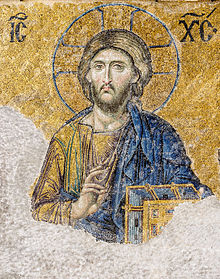
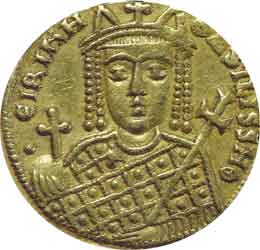
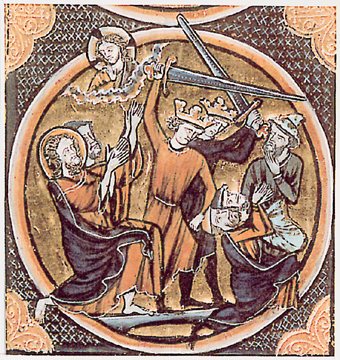
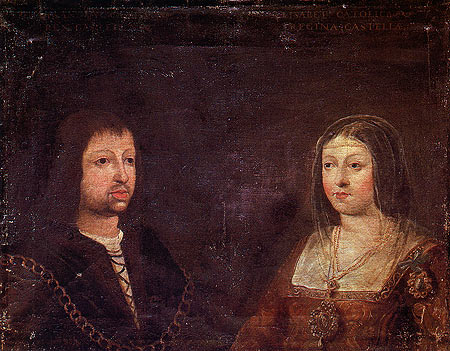
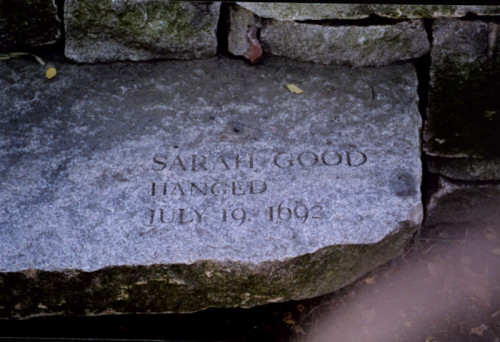
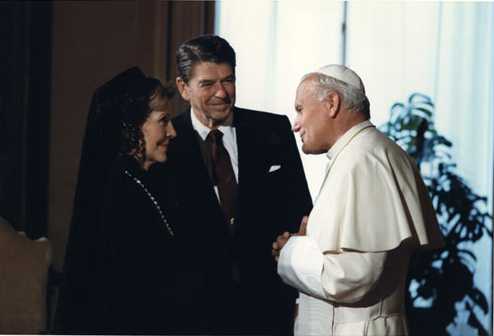


Francis fast-tracking John Paul II to canonization ~
next baseball commissioner insisting on HOF enshrinement of Bud Selig ASAP.